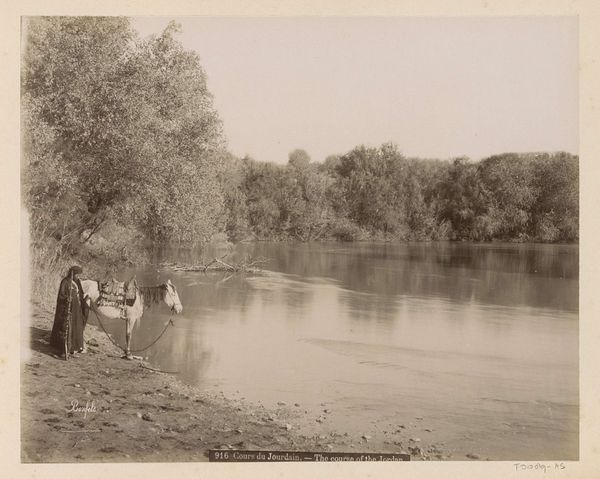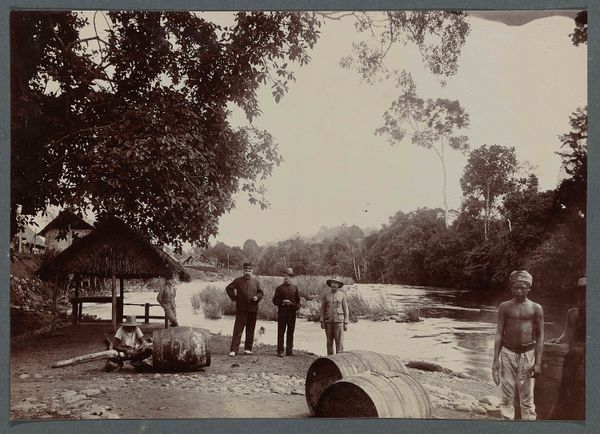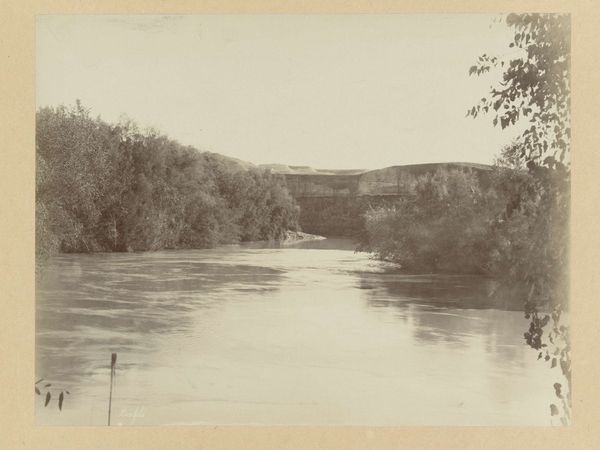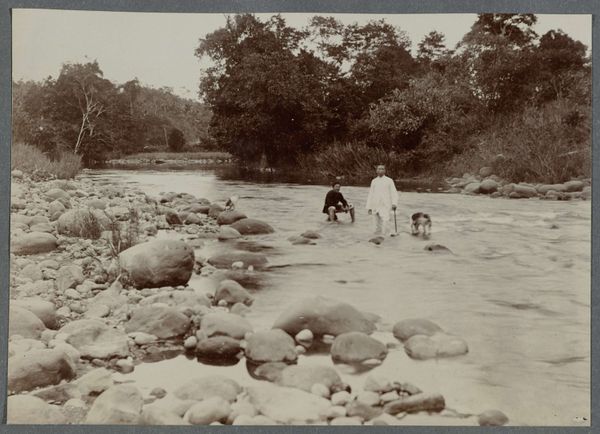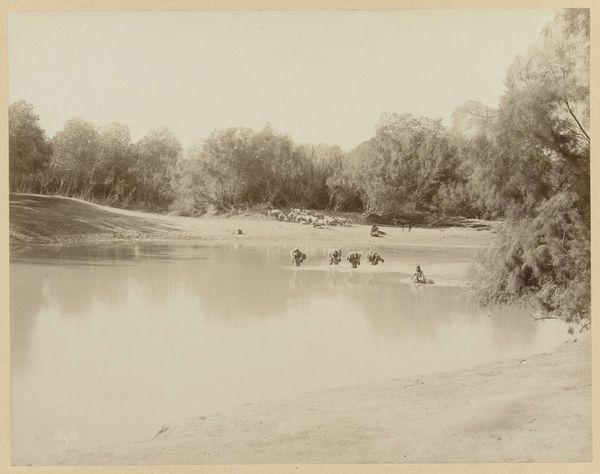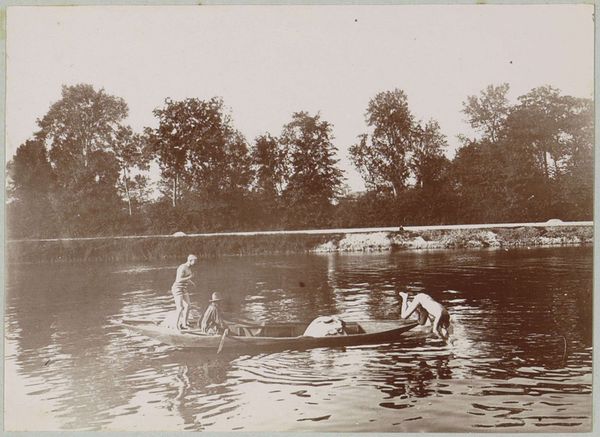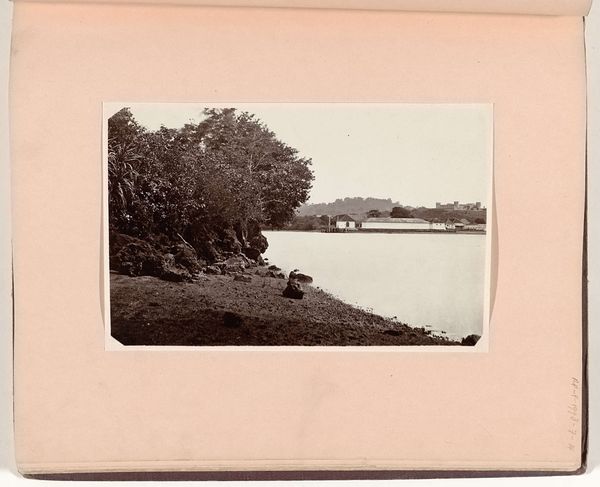
albumen-print, photography, albumen-print
#
albumen-print
#
landscape
#
photography
#
orientalism
#
france
#
albumen-print
Dimensions: 8 13/16 x 11 1/8 in. (22.38 x 28.26 cm) (image)11 x 14 in. (27.94 x 35.56 cm) (mount)
Copyright: Public Domain
Editor: This albumen print, "Cours du Jourdain," by Félix Bonfils, made in the 1870s, possesses such a still, quiet mood. The tones create a soft sepia dreamscape. What’s your read on this work? Curator: It's intriguing to consider Bonfils's work through the lens of French Orientalism of the time. Photography offered a seemingly objective "window" to the East, but how objective was it really? These images often reinforced European colonial perspectives and cultural hierarchies. Editor: How so? I mean, it just looks like a man with his mule. Curator: Consider the audience for these prints. They were largely consumed in Europe, feeding a desire for exotic landscapes and people. Bonfils, like many photographers working in the Middle East, often staged his scenes. Think about the figure positioned there; he's likely a local hired to complete a particular visual expectation of what the “Orient” should look like. Do you think he might have included the indigenous figure in the landscape for another purpose beyond depicting local reality? Editor: Hmm, I see. The presence of the man does seem staged and adds a layer of romantic exoticism. So, Bonfils wasn’t merely documenting; he was constructing a narrative for his European viewers? Curator: Precisely! The act of photographing itself was deeply embedded in a colonial context. French viewers' understanding and political attitude toward the Middle East were formed partly by consuming art like this. The medium perpetuated their notions. Editor: It’s eye-opening how a simple image can be loaded with so much historical and cultural baggage. Curator: Indeed! It highlights how museums are a place where cultural power can reinforce specific views; these photographs tell a story, but not always an accurate one. Editor: This makes me look at 19th-century photography in a completely different light. Curator: Exactly! Considering art as a product of its time and place, influenced by socio-political dynamics, enriches our understanding immensely.
Comments
No comments
Be the first to comment and join the conversation on the ultimate creative platform.
